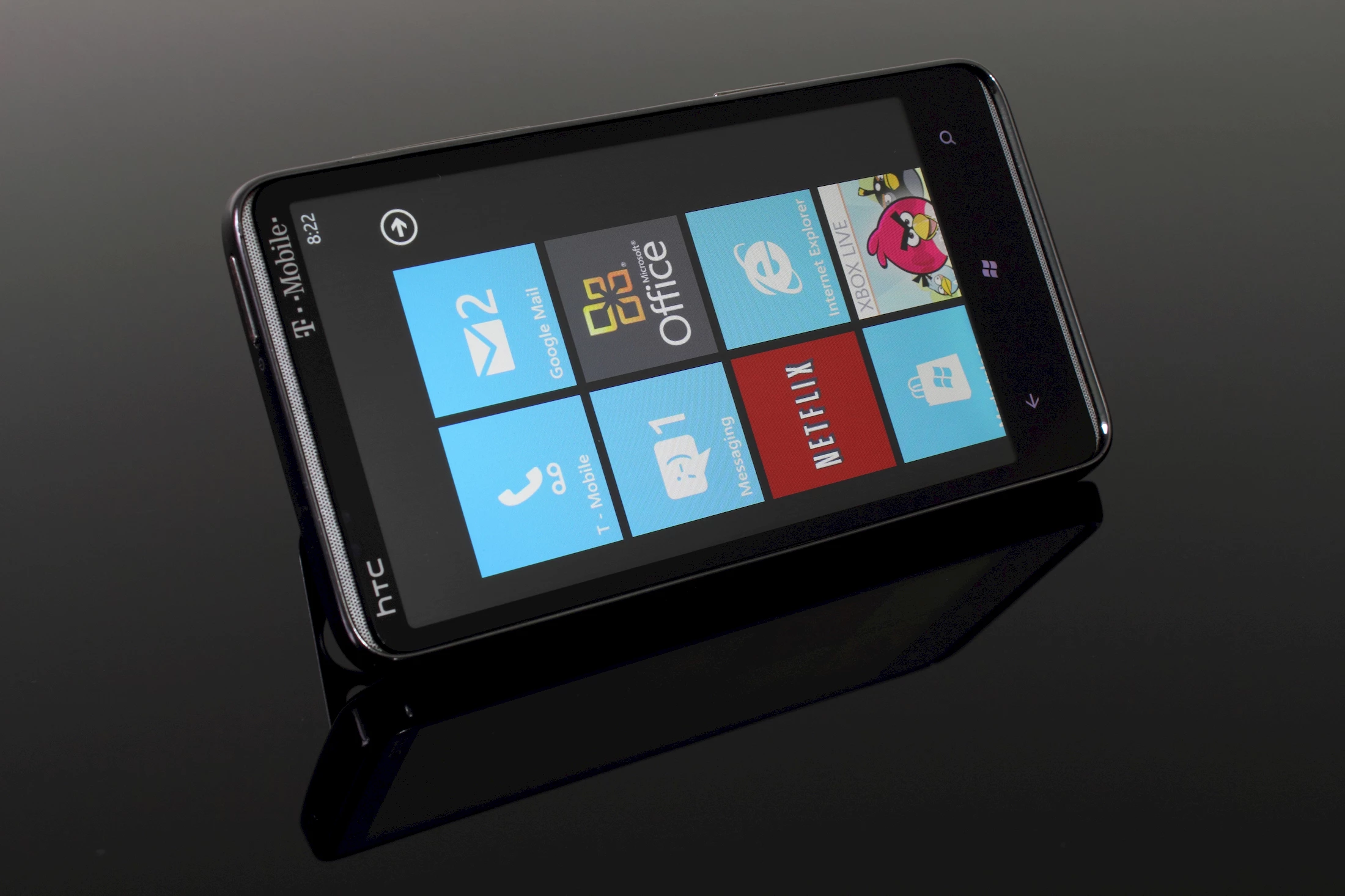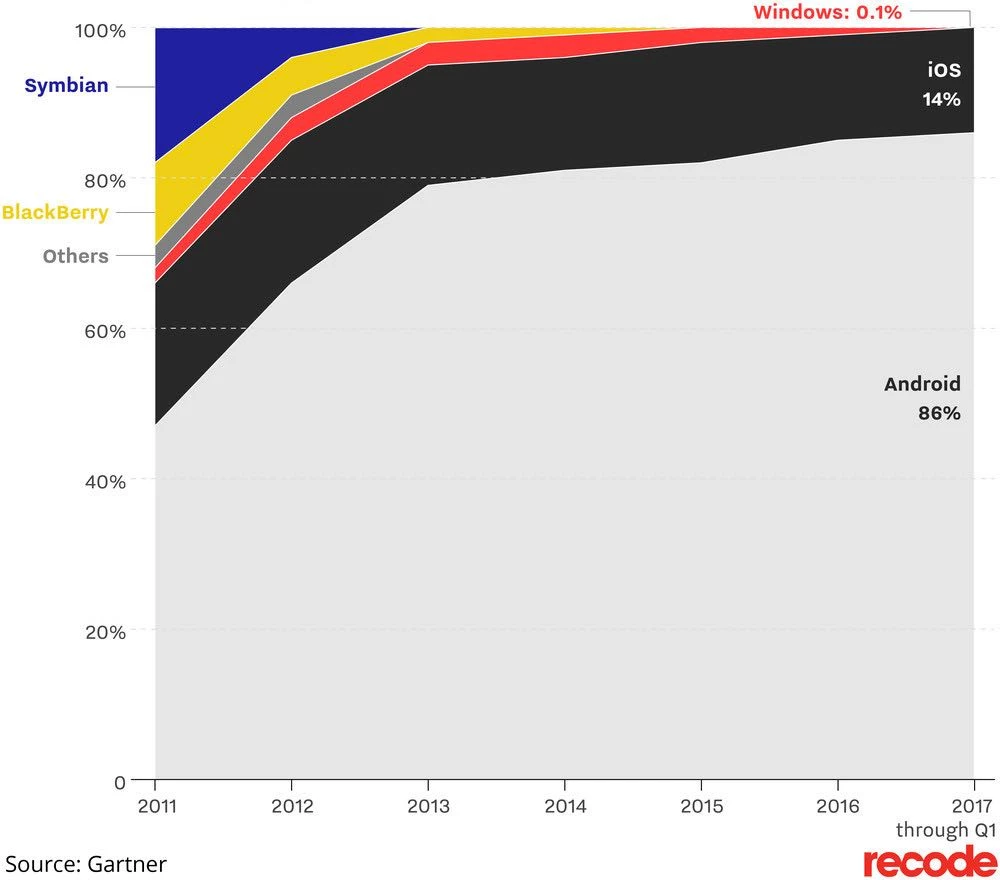Microsoft phone finished off by Google and Apple

The demise of Windows Phone
Microsoft has officially ended its support for the Windows Phone 8.1 operating system, as announced last October. This in spite of the fact that millions of Windows smartphones are still in circulation all over the world, 80% of which run on versions 7, 8, or 8.1 of Windows Phone.
Windows 10 Mobile, the last stronghold
The latest version of the mobile operating system, Windows 10 Mobile, is still supported for the time being, but this version is installed on a relatively small number of devices and is geared toward phablets and tablets running on its PC operating system, unlike version 8.1, which was geared toward the masses. On the hardware side, Microsoft hasn’t launched a new phone since 2015.
But how much longer will Microsoft continue supporting Windows 10 for mobile? Following the launch of the OS, updates were few and far between. An update has been announced for the Fall, but who knows if or when another one will take place after that. Some people believe that the company is planning on letting the operating system fade away, and ending support as early as next year.
The smartphone market

[Source: Recode.]
With Google’s Android OS owning 85% of the market, and with 14.7% of that market in the hands of Apple’s iOS, the market seems to be quite locked. How did it come to this? At the time of its launch, Windows Phone was considered a viable alternative to the two major players.
Timing had a lot to do with it. Microsoft decided to enter the market in 2010, which was probably too little, too late to seriously compete against Apple and Google/Android.
Further, a scarcity of applications didn’t help foster the wholesale adoption of Windows Phone. The number and availability of apps, as well as app distribution on platforms like App Store and Google Play, are often a deciding factor in consumers’ choice of device. The speedy organization of the two major players was detrimental to Microsoft, which fell into the vicious circle of even fewer developers interested in creating apps for Windows Phone.
Finally, Microsoft was perhaps not as clear-eyed as it could have been about Android’s comeback, which followed Microsoft’s own playbook: don’t provide your own hardware like Apple; rather, make your operating system available to other hardware manufacturers, helping them muscle in on the market with cheaper phones equipped with your OS.
For years and years, the cellphone market was a priority for Microsoft; until recently, CEO Satya Nadella’s mantra was “mobile-first, cloud-first”. Microsoft bet heavily on mobile, going as far as to acquire Nokia for over US$7 billion in 2013: a wager that did not pay off. Microsoft has since gutted its staff and infrastructure, letting go some 10,000 employees in its mobile division, i.e. most of its former Nokia employees in Finland.
What’s next for Microsoft?
After this painful setback, what’s the next step? Satya Nadella has recently admitted that while your average consumer will eventually own an average of six devices, most of them will not be running Windows. Henceforth, the company will concentrate on improving the experience of Android and Apple users. This may sound counterintuitive, but according to analyst Tom Warren, it could signal that the Redmond titan has finally become realistic.
Over the next few months, Microsoft will come up with various means by which users can transparently perform tasks over several different devices, for example starting a task on a PC, continuing it on a Microsoft device, and finishing it on an Android or iOS smartphone.
“There’s work we can do to help people live in that complex life in a more orchestrated kind of way,” explains Belfiore, Corporate Vice President in the Operating Systems Group at Microsoft. “We’re going to do a bunch of work that’s focused on the idea of ‘Windows PCs love devices’.” “We’re trying to meet all of our Windows users where they really are in their day-to-day lives,” says Belfiore.
Belfiore, who is back from a year’s sabbatical travelling the world with his family, brings a fresh new perspective back to Microsoft. One thing is certain: the company’s new face, which is now resolutely turned toward the future, is definitely one to watch, just like its other unconventional initiatives.
